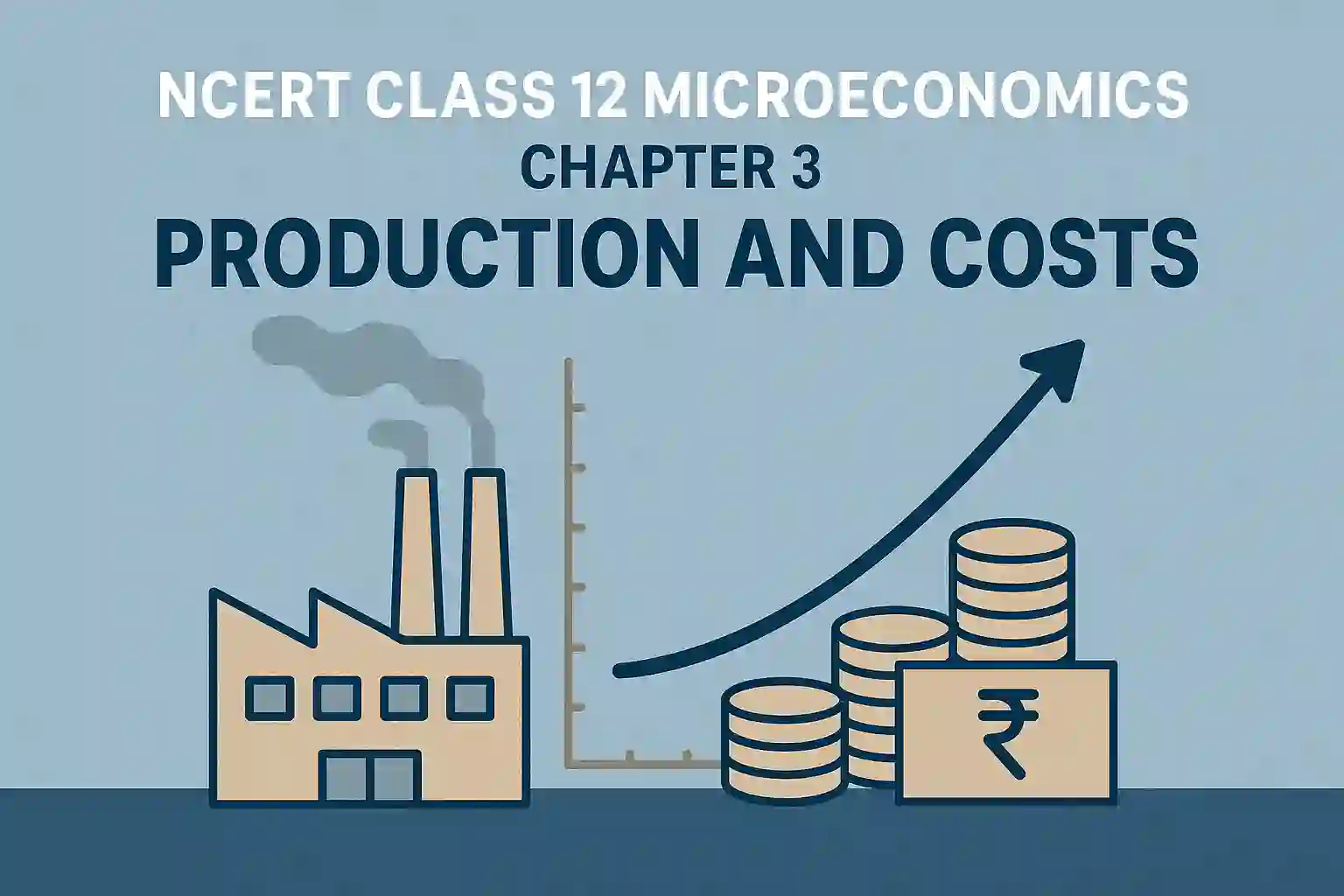Chapter 3 of Class 12 Microeconomics, titled Production and Costs, gives us a detailed understanding of how producers make decisions related to inputs and outputs. It explains how goods and services are produced, what costs are involved, and how producers decide the best combination of inputs for maximum profit. This chapter introduces basic economic terms like total product, marginal product, average product, fixed costs, variable costs and cost curves, which are very useful in real-life business decisions too.
I’ve written this article because I’ve seen many students, including myself back in school, find this chapter a bit technical at first due to graphs and cost formulas. But once you break it down, it actually becomes one of the most practical chapters in the syllabus. Whether you’re preparing for board exams or planning to take up economics later, understanding production and cost analysis is key. This chapter also sets the foundation for understanding firm behaviour in future economics chapters. So I’ve explained it here in simple language with examples and also shared the official NCERT PDF download link for easy revision.
Key Concepts in Chapter 3 – Production and Costs
This chapter is divided into two main parts – Production and Cost. Both are related but studied separately to understand them better.
Part 1: Production
Production is the process of converting inputs (like labour, land, capital) into outputs (goods and services). It mainly studies the relationship between input and output.
Key Concepts:
- Total Product (TP): Total quantity of output produced from given inputs
- Average Product (AP): Output per unit of input
AP = TP / number of units of input - Marginal Product (MP): Additional output produced when one more unit of input is used
MP = Change in TP / Change in input
These three are related through this formula:
TP = MP1 + MP2 + MP3 + …
Law of Variable Proportions
This law explains what happens when we increase only one input (say labour), while keeping others fixed (like land). It has three stages:
- Increasing Returns to a Factor: MP increases
- Diminishing Returns to a Factor: MP starts falling but stays positive
- Negative Returns to a Factor: MP becomes negative
This law applies only in the short run when some factors are fixed.
Part 2: Costs
In the short run, costs are classified into fixed and variable. In the long run, all costs become variable.
Short Run Costs:
- Total Fixed Cost (TFC): Costs that don’t change with output
(e.g. rent, salary) - Total Variable Cost (TVC): Costs that change with output
(e.g. raw material, electricity) - Total Cost (TC): Sum of TFC and TVC
TC = TFC + TVC
Average Costs:
- AFC = TFC / Q
- AVC = TVC / Q
- ATC = TC / Q = AFC + AVC
Marginal Cost (MC):
Change in total cost when one more unit is produced
MC = Change in TC / Change in output
Cost Curves
- AVC and MC are U-shaped due to the law of variable proportions
- AFC curve always slopes downwards
- When MC < AVC or ATC, they fall
- When MC > AVC or ATC, they rise
These relationships are very important for analysing firm behaviour in the next chapters.
Why This Chapter is Important
- It gives clarity on how production decisions are made
- These concepts are used in analysing firm behaviour in markets
- Questions on cost curves, law of variable proportions and MP/AP are very common in exams
- Easy scoring if you understand graphs and basic formulas
The best way to master this chapter is to practise drawing TP, AP, MP and cost curves and solving numerical questions from the NCERT textbook.
Download PDF – NCERT Class 12 Microeconomics Chapter 3
NCERT Class 12 Microeconomics Chapter 3: Production and Costs PDF



















